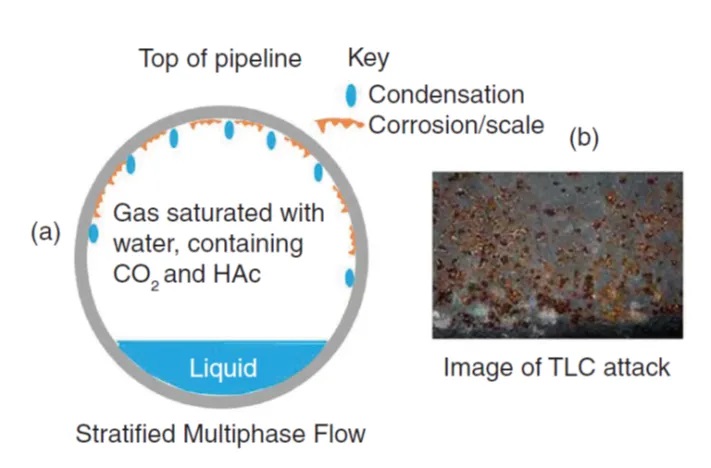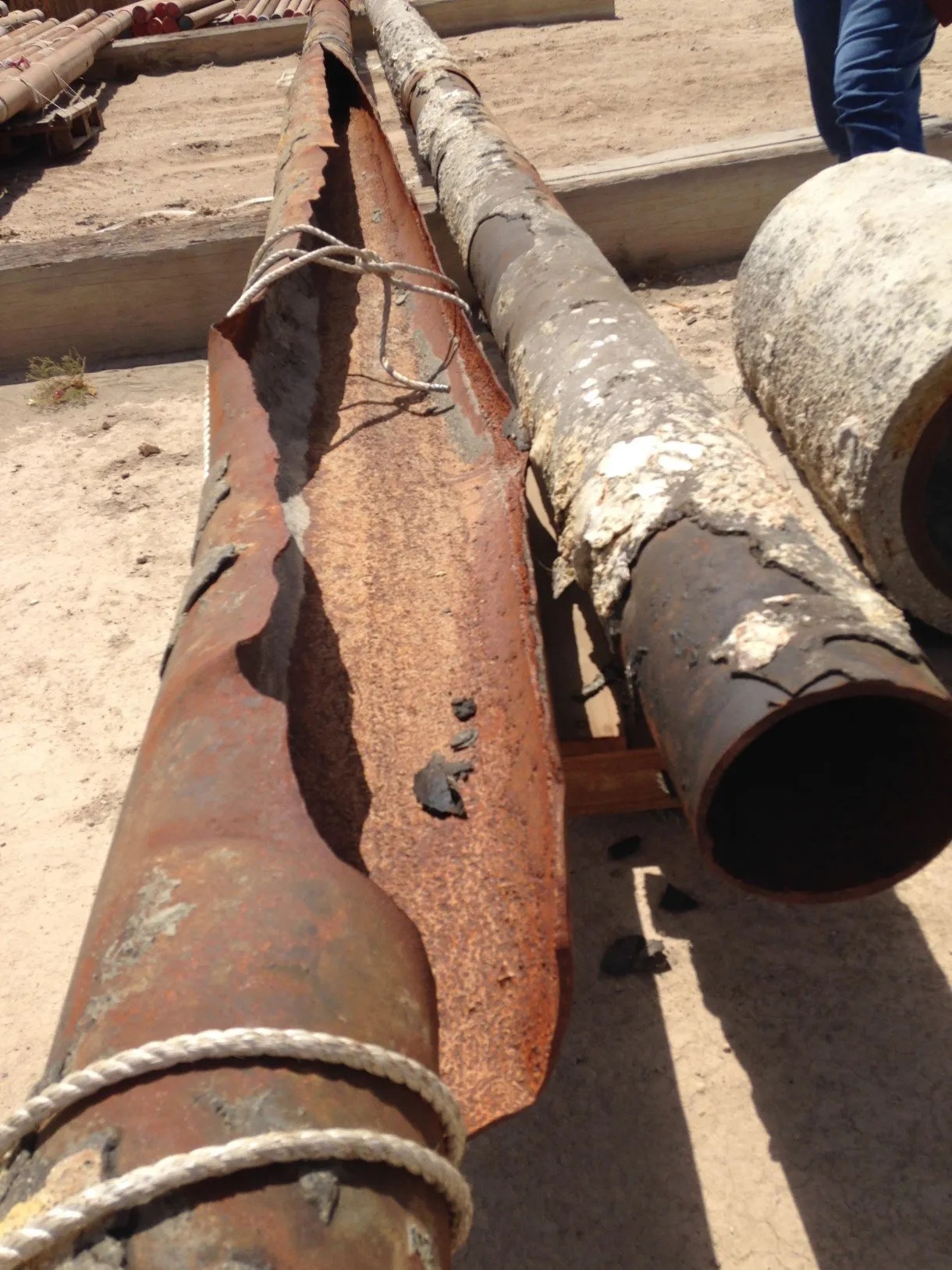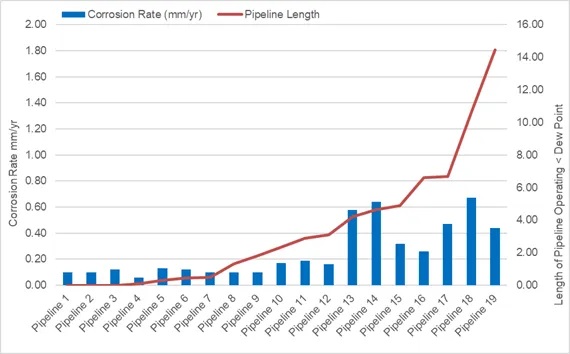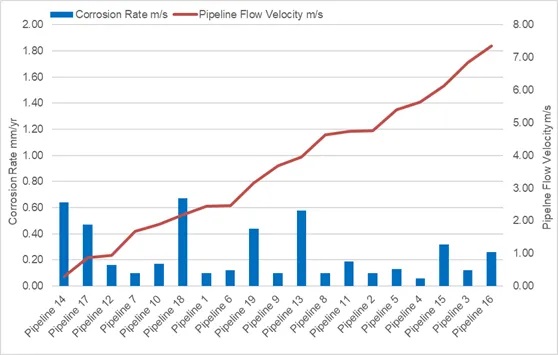Table of Content
- Top-of-Line Corrosion (TLC)
- Case Study – Major Pipeline Operator in the GULF Region
- AIE’S Expert Recommendations
- Veracity Pipeline
Top-of-the-line Corrosion (TLC) is a major threat for pipeline operators, which typically occurs in wet gas and multiphase pipelines with stratified flow. It is often responsible for accelerated corrosion, and loss of mechanical integrity and can result in catastrophic failures. Managing top-of-line corrosion in wet gas pipelines is, thus, crucial to providing a robust integrity demonstration for these assets. In this article, we discuss a real-life top-of-line corrosion case study and the value we delivered to our client through our approach.
What is Top-of-Line Corrosion (TLC)?

TLC takes place at the inner wall of a Pipeline due to condensation of water vapor. It mainly occurs in wet gas and multiphase Pipelines with stratified flow. TLC is driven by internal water condensation & causes Corrosion on top of the pipeline (mostly 9 o’clock to 3 o’clock) where conventional corrosion inhibitors typically provide limited protection.
Case Study – Major Pipeline Operator in the GULF Region
AIE has recently assisted an operator in better understanding and proposing risk mitigation measures to manage top-of-line corrosion in its pipeline network. This study comes after a lift gas pipeline ruptured longitudinally at a “top-of-line” orientation, around ~2.5 km from the upstream platform. An ROV survey of the damaged area identified the failure as a long tear with a length of ~5 m, in addition to the concrete weight coat damage.
The photographic evidence indicated internal corrosion at the top-of-line orientation, where the progressive loss of Wall Thickness had occurred. A closer examination of the affected area showed that the locally thinned area was effectively a channel that extends axially along the pipeline indicating top-of-line corrosion. No significant bottom-of-line corrosion was observed from the spools following the retrieval.
The operator requested AIE to perform an investigation to identify the possible causes for the catastrophic failure and establish TLC severity on the other pipelines within the network. AIE performed a holistic review of the entire pipeline network as part of the study and the following was concluded.
Location of the failure:
The failure occurred ~2.5 km away from the upstream platform. This is unusual since typical TLC occurs at the start of the pipeline. The difference in this case was due to the gas not being completely saturated with water at the start of the Pipeline.
Process parameters – temperature and flow:

Further investigation revealed that as the temperature drops along the Pipeline, the water holding capacity of the gas decreases and causes TLC, particularly where the Pipeline operating temperature drops below the gas dew point temperature. This allows sufficient time for full condensation of water leading to large accumulation. Flow Parameters also indicate a notable influence on the length of the pipeline and the flow velocity on the corrosion rates. The TLC severity increases with the pipeline length and decreases with increased flow velocity as seen in the graph below.
AIE’S Expert Recommendations
As a result of our technical study, AIE presented a series of recommendations to our client, including advice on:
- Proper material selection and corrosion allowance
- Chemical control
- Control of condensation rate
- Process control
- Avoiding cold spots
- Revised corrosion monitoring and Intelligent Pigging Frequencies
Veracity Pipeline
AIE’s Pipeline Integrity Management software, Veracity Pipeline, provides pipeline operators with a user-friendly and systematic approach to pipeline integrity management for both onshore and offshore assets. The software geographically presents the pipeline data and the risks associated with it whilst securely managing key integrity data and assigning mitigation actions to real-time risk values.
Veracity Pipeline Software forms an integral part of the operators’ Pipeline Integrity Management system. The structure and design of the software are fully compliant with industry codes and best-practice engineering standards. The web-based software is a multiplatform product therefore easily accessible from anywhere at any time.
Elevate your pipeline integrity with Veracity Pipeline Software from Asset Integrity Engineering. Experience unparalleled strength and risk management tailored for the oil and gas industry.
References
1. W. Frenier and D. Wint, “Multifaceted Approaches for Controlling Top-of-Line Corrosion in Pipelines,” in SPE International Oilfield Corrosion Conference and Exhibition, Aberdeen, 2014.
2. Asset Integrity Engineering









